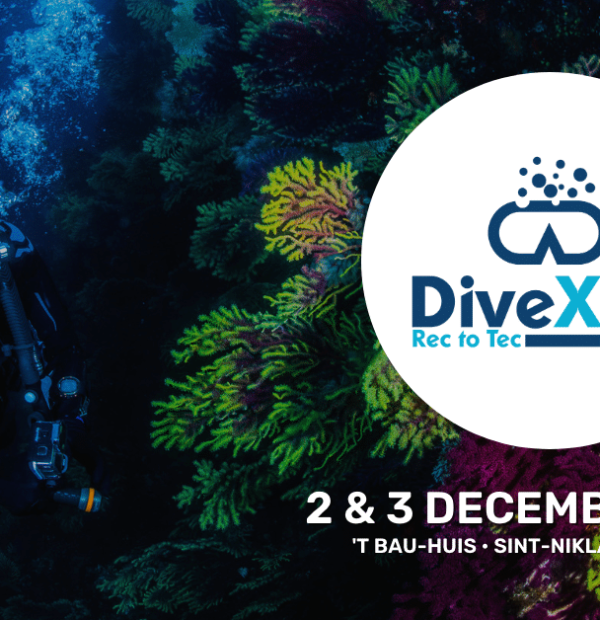Thursday, 16 May 2024
Menu

The Baltictech 2013 conference has started in Gdynia. After the official opening, the lectures, which this year are conducted simultaneously in 3 rooms, have started. We invite you to read our report.
Report from day two of the Baltictech 2013 conference
Photo gallery of the Baltictech 2013 conference
18:00 Jarrod Jablonski – Mars – one of the biggest wreck projects in Europe in recent years
 The last lecture of the first day was given by Jarrod Jablonsky. The topic of the presentation was the discovery and research conducted on the Mars shipwreck. Mars was the flagship of the Swedish fleet and at the same time the largest ship that sailed the Baltic Sea in the 16th century. The wreck was discovered in 2011 by Swedish divers led by Richard Lundgren.
The last lecture of the first day was given by Jarrod Jablonsky. The topic of the presentation was the discovery and research conducted on the Mars shipwreck. Mars was the flagship of the Swedish fleet and at the same time the largest ship that sailed the Baltic Sea in the 16th century. The wreck was discovered in 2011 by Swedish divers led by Richard Lundgren.
Parts of the vessel lie scattered up to 150 metres from the wreck. Jarrod explained to the audience what the expedition looked like and what tasks the members had. The individual elements that the divers pulled out of the wreck can be seen in the museum in Vaestervik. Further research expeditions to Mars are planned for the next few years.
16.30 Johan Ronnby Wrecks of the Baltic Sea – unusual discoveries of marine archaeology
A very interesting lecture presenting the achievements of maritime archaeology as a material for better understanding of people and the past. The lecture started with a historical and geological overview of the Baltic Sea region. Then, on the example of a few very interesting wrecks such as the Vasa, Mars, Svardet or the Ghost Ship from 1650, the lecturer talked about the interesting information provided by the exploration of the above mentioned wrecks. The main topic was nautical science and boatbuilding in the 14th and 15th centuries. (many vessels are known only from period paintings), but also on the life and work of the crew.
15:30 Leigh Bishop two decades of deep wreck exploration. Triumphs and failures.

After the lunch break, Leigh Bishop’s lecture began in the main hall. This was not his first visit to the festival in Poland. Leigh has already been a guest of the wreck festival in Łódź twice (read more about Leigh Bishop). During the presentation Leigh talked about 2 decades of wreck diving.
The beginnings of diving were far from the standards we are used to today. Among other things, we could hear about the first rebreather dives on the Britannic wreck during an expedition in the 1990s and about two further expeditions in 2003 and 2009. The 2009 expedition is connected with a tragic event. During one of the dives, Carl Spencer died while filming for National Geographic. We went on to hear about the Titanic expedition and the Luistana. The Luisitania was sunk on 7 May 1915 by a German U-boat. After this event, the United States joined the First World War. Other wrecks discussed included the Wilhelm Gustloff, Justicia, Transylvania and Andania, HMS Audacious.
13:00 Phil Short J2 project – the biggest cave project ever

Phil Short talked about expedition J2. The cave to be explored is huge. At the very beginning, you have to climb several hundred metres almost vertically down, and then many kilometres horizontally. The expedition members had to set up 4 camps underground. Transporting the equipment needed to survive underground, food and diving equipment was a huge challenge. During short films we could see how the journey to the cave looked like, the transport of the equipment in the cave (including overcoming claustrophobic and narrow passages), and also how to take care of oneself in the cave :). Eventually, Phil and Marcin Gali managed to reach the place that had been reached during the 2009 expedition, repair part of the railing and explore a new part of the cave, up to the place where the river flowing through the cave disappears in narrow rock crevices. The depth of the cave was set at 1229m. The last thing to do was to remove all the equipment from the cave.

The presentation prepared by Zdzisław Sićko brought the audience closer to the secrets of carbon dioxide diving. The presenter in an interesting way led the audience through the basic issues of carbonation. There was no lack of information on the history of long and deep dives supported by literature. The whole event covered a period of about 80 years. The first experiments in long diving (a horse and mule immersed in a caisson at a depth of 61m for 5 days) were recalled, and the influence on the development of this branch of diving from the involvement and resources of the American space agency NASA was pointed out. The development of saturation diving was also greatly aided by the fuel crisis of the mid 1970s, when the search for alternative fuel sources began.
12:00 Jacek Kot Experimental methods of decompression
 Dr Jacek Kot talked about research into decompression and the factors that influence it.
Dr Jacek Kot talked about research into decompression and the factors that influence it.
Topics covered included negative pressure breathing and recompression during decompression. Among other things, it was possible to learn how research carried out by an astronaut 15 years ago may influence future decompression models.
 This time Lukasz Piórewicz could announce himself as the speaker. During the lecture at 12:00 in room A, it was he who talked about diving in Lithuania. At the same time, in room B there is a presentation of the film “Deep Love” made by HBO.
This time Lukasz Piórewicz could announce himself as the speaker. During the lecture at 12:00 in room A, it was he who talked about diving in Lithuania. At the same time, in room B there is a presentation of the film “Deep Love” made by HBO.
11am Kevin Gurr Rebreathers. Fact, Fiction, Voodoo and other adventures

The second lecture of the day held in the main hall attracted a full house. Kevin Gurr talked about various aspects of rebreather diving. Among other things, he discussed the topics of starting to dive on rebreathers and the mistakes often made by divers. Kevin also talked about how his adventure with rebreathers started and about some of the projects he has taken part in.
 In other rooms there were lectures conducted by Michal Kosut, who talked about the approach of diving insurers to technical diving, and Nicolas Sparrow, who talked about physical preparation for diving.
In other rooms there were lectures conducted by Michal Kosut, who talked about the approach of diving insurers to technical diving, and Nicolas Sparrow, who talked about physical preparation for diving.
10:00 Pascal van Erp – Ghost fishing
 The first lecture of the conference was given by Pascal von Erp. The topic he talked about was “Ghost fishing”. Pascal initiated a programme to remove diving nets from underwater. Simultaneously, in the other two rooms, lectures were held by Phil Short, who talked about heating systems and how to use them properly, and by Artur Grządziel, who talked about the wreck of a bomber found at the bottom of the Baltic Sea.
The first lecture of the conference was given by Pascal von Erp. The topic he talked about was “Ghost fishing”. Pascal initiated a programme to remove diving nets from underwater. Simultaneously, in the other two rooms, lectures were held by Phil Short, who talked about heating systems and how to use them properly, and by Artur Grządziel, who talked about the wreck of a bomber found at the bottom of the Baltic Sea.

During Phil Short’s lecture you could see, among other things, what batteries are used for the heating system in cave diving.










Welcome to DIVERS24.COM, your daily source of scuba news, freediving, scuba diving information, and equipment reviews. Our comprehensive coverage of the dive industry from A to Z provides you with all the latest scuba news, training updates, underwater photography tips, and everything else related to scuba diving. Whether you’re a beginner or an experienced diver looking for more knowledge about scuba gear or techniques – we’ve got it covered! With our in-depth articles written by experienced divers who have been there and done that, you are sure to find exactly what you need here at Divers24.com. Dive into scuba news today!
Underwater Media Sp. z o.o.
Szafarnia 11/F8,
80-755 Gdansk, Poland
Welcome to DIVERS24.COM, your daily source of scuba news, freediving, and scuba diving information. Sign in for a weekly news update and discount coupons for dive gear and apparel.
@2023 - underwatermedia.pl. All Right Reserved. Designed and Developed by Tworzenie stron internetowych Gdansk

The Divers24 portal is currently the largest online medium treating diving in Poland. Since 2010 we have been providing interesting and important information from Poland and around the world on all forms of diving and related activities.
Contact us: info@divers24.com